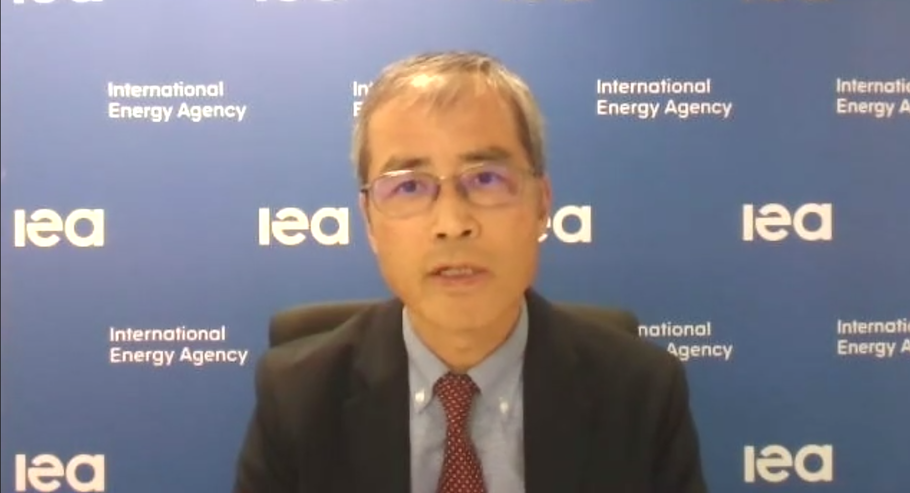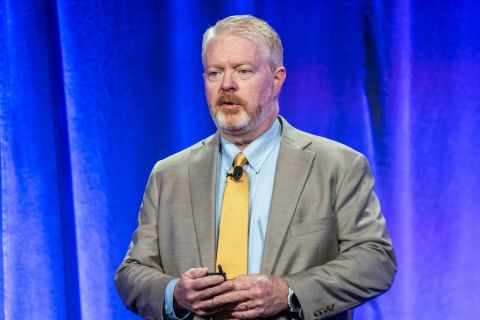With 2050 looming closer, bringing with it the commitment to net-zero emissions, companies and countries are looking for exact steps to take to achieve their goals. Getting to net zero is no small feat, and the energy sector needs guidance and structure to make sure they are keeping their word and getting there on time.
During Rice University’s Baker Institute 2021 Annual Energy Summit keynote address, delivered by Keisuke Sadamori, director of energy markets and security at International Energy Agency (IEA), he introduced the IEA's Net Zero by 2050 Roadmap. He said the previous goal of the roadmap was to determine the steps to net zero for the energy industry by 2070, but as leaders changed their goals to 2050, the plan adjusted accordingly. This roadmap, according to Sadamori, is “narrow but achievable.”
“The Net Zero by 2050 Roadmap calls for an immediate and massive deployment of all existing clean and efficient energy technologies,” Sadamori said. “So we cannot continue ‘business as usual’ for a while and then try to reduce the emissions in the very final years before 2050. Serious efforts must start immediately.”
Current goals and challenging targets
There are 400 milestones total in the Net Zero by 2050 Roadmap, broken down by critical sectors and technologies. The main goals are broadly defined in the overview and broken down every five years between 2020 and 2050.
According to the roadmap, the current goals are as follows:
- 2025: a surge in clean energy investments to bring jobs and growth
- 2030: drive huge leaps in clean energy innovation
- 2035: a rapid shift away from fossil fuels
- 2040: electricity becomes the core of the energy system
- 2045: new low-emissions industries flourish
- 2050: a clean energy world
Sadamori addressed each of these milestones with the summit attendees. Wind and solar technologies must be deployed at a rate of 4% per year, as opposed to the 1.3% rate so far in 2021.
“4% means three times of the recent average rate of improvements,” Sadamori said. “This is a very challenging target, but ever since the first, efficiency continues to be the key principle, and prioritizing energy efficiency is not only crucial for emissions reductions in the near future, but also for ensuring the energy security. Doing more with less is always a secure, no-regret option.”
“This is not limited to the short term,” he continued. “Net zero by 2050 requires substantial contributions from new technologies still in the development stages. So efficiency will continue to be important to hedge against such technological risks.”

Economic growth
To achieve these goals, companies will require both significant financial and technological investments. According to the roadmap report, investments will need to “more than triple by 2030 to $4 trillion.” However, the investments will ultimately lead to huge economic growth, creating millions of jobs and providing access clean electricity globally.
“In renewables, the energy efficiency and infrastructures—those are the investments needed,” Sadamori said. “The policies need to be designed to send market signals that outlook new business models and mobilize private spending, especially in the emerging economies. The accelerated delivery of the international public finance will be critical to energy transitions, especially in developing economies, but ultimately the private sector will need to finance most of the extra investment required.”
Technological advancements
Sadamori said most of the technology required is still in development and therefore won’t be able to be deployed until later. However, the roadmap demands the technology be completed quickly to harness clean energy sooner.
“Diverse clean energy technologies must be pursued, and we have no luxury for being selective,” Sadamori said. “Diversity is a sense of security within itself."
In the electricity sector, he said the dispatch renewable technologies (e.g., hydropower, bioenergy, geothermal) are all critical and important.
“We see the U.S. as an enabler of clean energy security [which] must be accelerated in both the power generation sector and also in the hard-to-abate industry sectors,” he continued. “The locomotive fuels like hydrogen, ammonia and other [alternative] fuels should be accelerated further. The demand side resources varies significantly when contributing to the power system flexibility and electricity security.”
Future of oil and gas
For those wondering if the deployment of greener energy sources means oil and gas will become unnecessary and obsolete, that is not the case—as of right now. The IEA will accommodate the consumers’ demands, but by the goals of the roadmap, consumer demand will increasingly shift toward clean energy sources.
“It is often reported by the media that the IEA suggests the investments in new oil and gas projects should not be done, and this is not correct,” Sadamori said. “What the roadmap says is that if oil and gas demand were to go down, as required in the net-zero emission pathway, approvals of a new oil and gas development would not be necessary. So, if demand for oil and gas do not go down, while industries hesitate to take on new projects due to concerns over the stranded assets, [the] oil and gas market could go through a new round of volatility.”
Recommended Reading
How Diversified Already Surpassed its 2030 Emissions Goals
2024-04-12 - Through Diversified Energy’s “aggressive” voluntary leak detection and repair program, the company has already hit its 2030 emission goal and is en route to 2040 targets, the company says.
BKV CEO Chris Kalnin says ‘Forgotten’ Barnett Ripe for Refracs
2024-04-02 - The Barnett Shale is “ripe for fracs” and offers opportunities to boost natural gas production to historic levels, BKV Corp. CEO and Founder Chris Kalnin said at the DUG GAS+ Conference and Expo.


